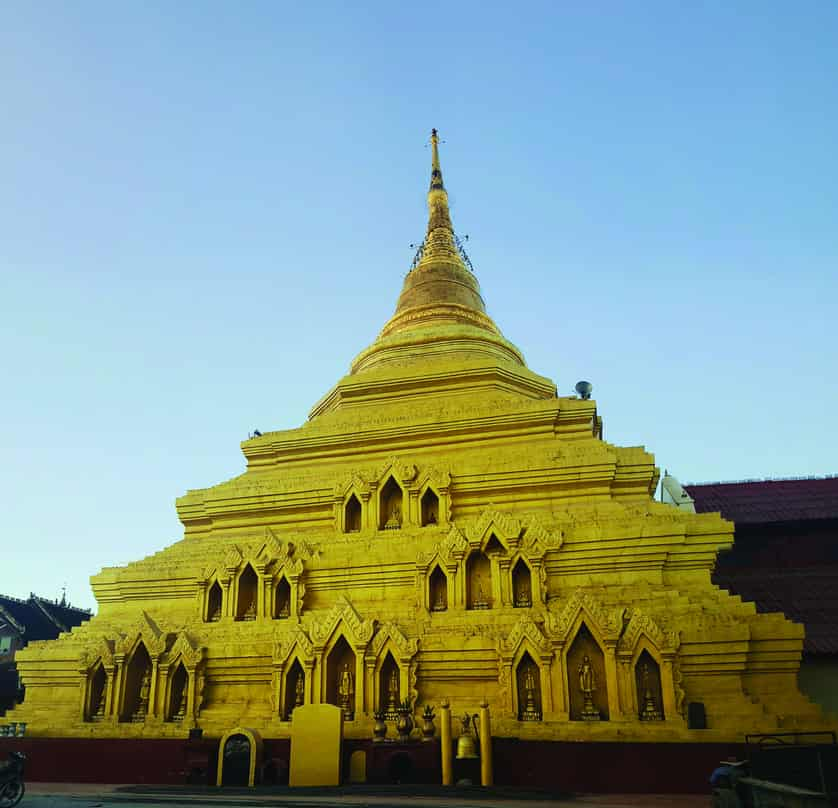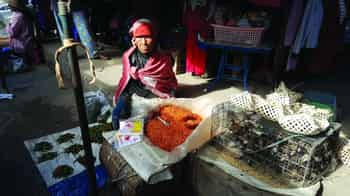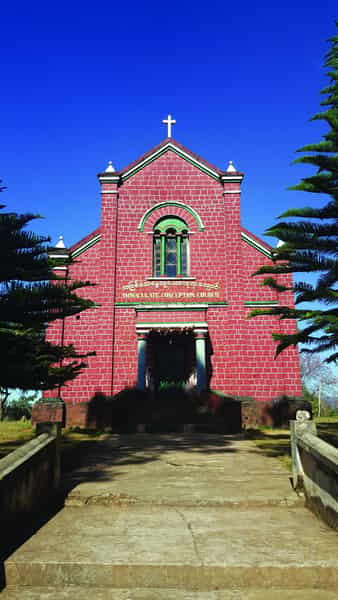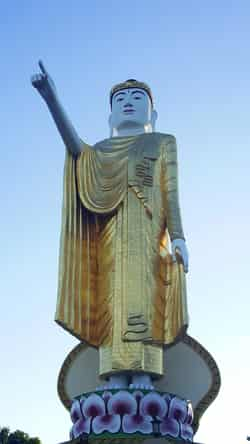Chiang Mai and Kengtung in Myanmar have had a close and complicated relationship for over seven centuries. Though the Shans (Tai) are believed to have arrived to the mountainous region from China around the 10th century, Kengtung only entered history books when a grandson of King Mengrai, founder of Chiang Mai in 1296, founded the city after defeating the Wa, bringing it, for a while, into the Lanna Kingdom fold. As both Chiang Mai and Kengtung became occupied, then abandoned, by the Burmese over the centuries, Kengtung was an important trade centre between Lanna, Myanmar, China and Siam. It again, briefly, came under direct rule of the Lanna Kingdom in the early 19th century and during the Second World War it was also occupied by Thai forces for three years.

Kengtung is the largest of the 33 Shan statelets and for centuries was ruled by Shan sawbwas, similar to Chiang Mai’s jaos, or royalty, who would pay tribute to various powerful kingdoms in the region. Members of its royal family have often intermarried with ours and the families through to today share many relatives with one another.
Western influence began with the arrival of missionaries in the late 19th centuries, and there remains a strong Christian presence in Kengtung and the surrounding areas. With the arrival of the Brits not long after, Kengtung became the easternmost outpost of the British Empire and though not a particularly important one, it acted as an administrative centre as well as base for many British mining interests. There is even a hill station on a 1600m high plateau about 30 kilometres from town where the Brits retired when the heat became unbearable.

The Shan star was on a rise following the Second World War, when Sao Shwe Thaik, sawbwa of Yawnghwe, a neighbouring state, was appointed the first president of the Union of Burma 1948. Unfortunately internal conflict (and extenal, with Kuomintang forces active in the area) began to escalate and the Shan sawbwas gave way to Burmese pressure, relinquishing administrative authority in 1959 to Burma in return for ‘pensions’. After the 1962 military coup by General Ne Win, the military imposed restrictions on foreigners to Burma and with it the Shan state, including Kengtung. Kengtung remained fairly inaccessible to the world until around 1993 when the Takhilek border finally opened to allow special permit travel to the city.
The drive to Kengtung from Thailand’s border is similar to the Chiang Mai to Chiang Rai drive…a quarter of a century ago. The road is paved, but often potholed. There are villages dotted along the way with scruffy children playing by the road side and traditional ways of life readily apparent.
Kengtung sits in a valley, and while this trade town with a population of around 60,000 is no longer at the centre of the Golden Triangle opium industry, it is bustling with Lahu, Akha, Wa and Shan people, often still dressed in traditional attire coming to the city to trade their wares. At its spiritual heart is Naung Tong Lake, where locals go for evening strolls, barbeques and a spot of exercise. The walk around the lake takes around an hour and offers lovely views of surrounding temples and architecture.
Each morning, at the crack of dawn, the central market is where it all happens — its trade heart. Sit on tiny stools and warm your hands with a hot cup of tea while slurping delicious Shan noodles. Haggle with tribes people hawking their wares, or take in some of the more exotic items hunted and gathered from the jungles on sale. A mere ten years ago, parts of endangered species would be on sale — pickled in jars, stretched on a rack or dried in packs — but thankfully these are becoming rare sights.

There are a number of lovely temples worth visiting in the city with Zom Kham Temple’s large golden pagoda, said to date back over a millennia, atop a hill overlooking the city being one you won’t be able to miss, and a great way to take in the Kengtung vista.
But it is the mountains surrounding Kengtung that is becoming a big draw with visitors these days. Filled with traditional tribal villages reminiscent of Chiang Mai thirty years ago, this is surely one of the most diverse traditional tribal areas left in Asia today. Visits to tribal villages are within a couple of hour’s drive of the city with many familiar peoples such as the Akha or Lahu living in traditional villages. Because of language barriers, as well as a lack of understanding of tribal customs, it is best to shop around for a reputable guide who will be both respectable and knowledgeable about each destination. There are also some tribes unique to the area such as the Ann tribe, a group of Mon-Khmers who predate the newer Shan tribes, and one whose members have retained much of their animist beliefs, in spite of some communities having converted to Buddhism and Christianity. The Ann still sport betel nut black teeth and many of its women used charred bark as a distinctive black lipstick. The Ann are indigenous only to this region and only a handful of villages remain.

A couple of hour’s drive out of Kengtung will find you at Loi Mwe Hill Station. It is a picturesque, if modest, hill station built by the Brits where old colonial buildings like the headquarters of the British District Commissioner in colonial Burma, as well as a Catholic church, can still be visited. Temperatures are cool, there is a lake nearby to stroll around or picnic by, and the surrounding scenery is stunning.

There is much to see and take in when visiting Kengtung and the surrounding mountains. The people and their customs are fascinating and, on the most part, friendly, though often shy, so please be respectful of their privacy when taking photos. There are waterfalls to frolic in and fantastic vistas to take in. The Shan food is also delicious, so much so that Shan noodles are found in nearly every teahouse in Myamnar. Make sure you try the yellow tofu salad which is spicy and refreshing at the same time, and the Shan yellow rice cakes with tomato paste makes for a great afternoon snack.
A one day’s drive from Chiang Mai will have you in Kengtung and experiencing cultures which have changed little in the past centuries.
Thanks to Amazing Kengtung Resort for sponsoring this press trip www.amazingkyaingtongresort.com.
And also to our guide Francis Sai Twe for putting it all together, Sai.Francis2012@gmail.com, Kengtong.trekkinginformation@gmail.com.
